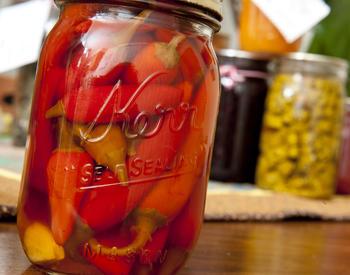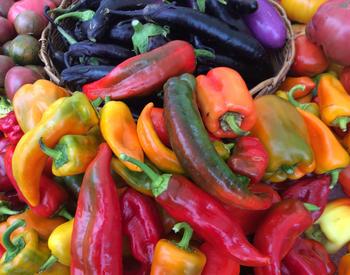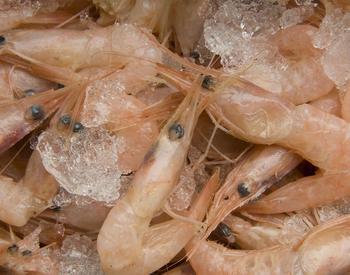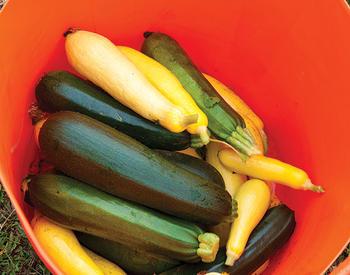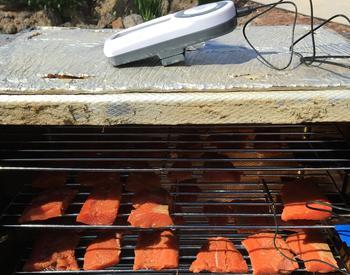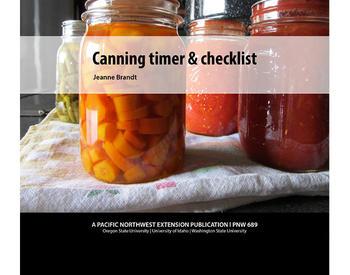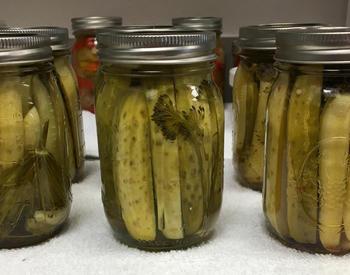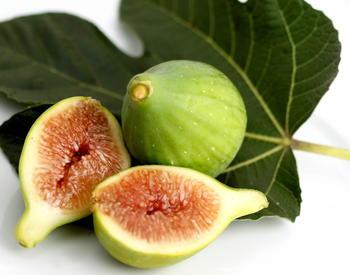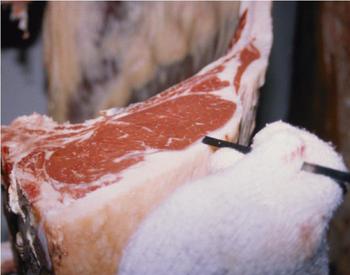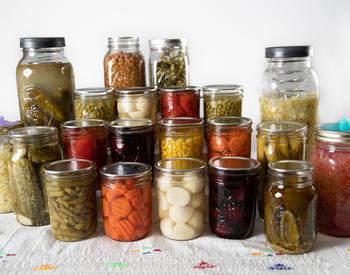Download this publication as a PDF
| Problem | Cause | Prevention | Other Information |
|---|---|---|---|
| Loss of liquid from jar after processing. |
Food packed too tightly causing boiling over. Air bubbles in jar. Jars not covered with water in water bath canner. |
Pack food loosely. Remove air bubbles with spatula. Have at least one inch of water covering jars in boiling water bath. |
If a good seal is formed, the food is still safe although probably not very attractive. Never attempt to replace liquid without reprocessing. |
| Jar seals initially, then seal is broken. |
Growth of organisms in jar due to underprocessing. Crack in jar. Food particles on sealing surface of lid. |
Process properly.
|
If seal has been broken for an unknown amount of time, the food has probably begun to spoil. If broken seal is detected within 24 hours of canning, the food may be used or reprocessed. |
| Cloudy liquids. |
Bacterial spoilage. Minerals in water. Anti-caking agents from table salt. |
Process properly. Use soft water. Use canning salt. |
With bacteria spoilage, liquid is usually murky and food is soft. If there is microbiological spoilage, destroy food. |
| Fermentation, gas formed in jar—seal may be broken. Bubbles usually apparent and there may be a cheesy, alcoholic odor. | Yeast. |
Proper processing. Yeast is easily destroyed by heat. Avoid open-kettle method. |
This type of spoilage will generally develop within a few days after canning. If microbiological spoilage occurs, destroy food. |
|
Gassy and frothy. Bad odor. |
Acid tolerant bacteria. | Process properly using clean equipment and food. | This type of spoilage generally develops within a few days after canning. If microbiological spoilage, destroy food. |
| Medicinal, sour or bitter flavor. No gas. Generally occurs in tomatoes. | Bacteria-thermophilic (optimum temperature above 113°F or 45°C). | Process properly. Use clean equipment and food. Cool food quickly and store at cool temperature. | These bacteria may survive the canning process but will remain dormant unless cooled slowly or stored at a high temperature. If microbiological spoilage, destroy food. |
| Fuzzy growth on surface of food, musty odor, often food is slimy. | Mold |
Proper processing. Avoid open-kettle method. Reheat applesauce to boiling before filling jars. |
By-products of molds (mycotoxins) may be toxic or carcinogenic. Large amounts of mold may decrease the acidity of the food so other microorganisms may grow. If microbiological spoilage, destroy food. |
| Darkening after removal from jar. | Enzymes | Process long enough to inactivate enzymes. |
This would indicate gross underprocessing. Underprocessed foods may be unsafe. |
| Pink, red, blue or purple color in canned apples, pears, peaches and quinces. | Natural chemical change with heat. | None. | This may vary with the variety of fruit. Food is safe to eat. |
| Floating fruit. | Packed too loosely. Fruit is lighter than syrup. |
Use hot pack. Use ripe fruit; use medium or light syrup. |
Heating drives oxygen from tissues. |
| Crystals in grape products. | Tartaric acid naturally present in grapes. | Strain juice, refrigerate 24 hours. Save clear liquid for processing. | Reprocessing dissolves the crystals. |
| Corroded lids, dark color develops on part of lid exposed to food. | Reaction of acid with metal in lid. | None—possibly reduced by not overfilling. | Food is safe to eat unless corrosion has been extensive enough to cause the seal to fail or unless the color is caused by mold. |
| Black, brown or gray colors in food. | Substances in food react with minerals in water or metal utensils. | Use soft water. Avoid using copper, iron or chipped enamel utensils. | Food is safe to eat unless color changes are due to microbial spoilage. |
Source: Food Safety Advisor Volunteer Handbook. Washington State University/University of Idaho, 2002
2017 Oregon State University. OSU Extension Service cooperating. OSU Extension Service offers educational programs, activities, and materials without discrimination based on race, color, religion, sex, sexual orientation, national origin, age, marital status, disability, or disabled veteran or Vietnam-era veteran status. OSU Extension Service is an Equal Opportunity Employer.
